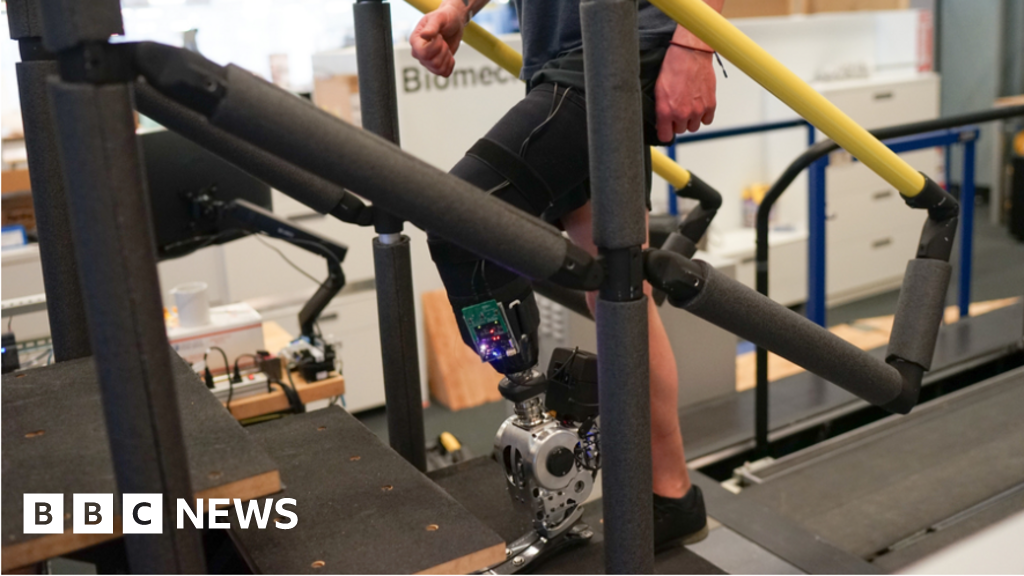A high-tech prosthetic leg enables amputees to walk naturally and at normal speeds without consciously thinking about it, a study suggests.
Developed by scientists at Massachusetts Institute of Technology, the bionic leg links the user’s brain activity to nerves in important muscles controlling movement.
Study author Prof Hugh Herr said the results of a small trial were “quite miraculous” and could influence the way prosthetic limbs are constructed in future.
But there are years of development work still to be carried out before it can be used by more patients.
There are lots of limitations to the way current artificial limbs are able to move, say the researchers in Nature Medicine.
Their quest was to test whether new technology could make walking with a leg amputation below the knee more natural.
Normally, during amputation, muscles are wrapped up to create soft padding for maximum comfort when using an artificial leg.
But this means control of nerves and natural leg movements are lost.
With the new technology, surgery to reconnect vital pairs of muscles on the leg stump is needed first – either during the amputation or later on.
Then, using sensors on these muscles, signals are sent to a robotic controller which helps the prosthetic leg calculate how much to bend the ankle and how much power to deliver when walking.
Information from muscle nerves is communicated to the prosthesis and then back to the patient, resembling the way a real limb works.
“So when the amputee thinks, they feel the limb moving naturally – those muscles move as they did when the limb was intact,” Prof Herr told journalists on a briefing.
“It’s as if they are able to feel their phantom limb and its movement,” he added.
And all through greater control from the human nervous system.
In a study on 14 amputees who had all lost one leg below the knee, seven were given the new “neuroprosthetic interface” during amputation and the other seven were given standard amputation care.
Their walking was then tested over flat ground, going up ramps and over obstacles.
Those with the new technology had a walking speed 41% faster than the other group – equivalent to people who have not lost a leg, the study found.
They were also better able to deal with slopes, go up and down steps and navigate obstructions.
“One of the main findings here is that a small increase in neural feedback from your amputated limb can restore significant bionic neural controllability,” said study author Hyungeun Song.
This could help amputees to move more naturally and freely, to the extent they could dance and run.
According to MIT researchers, about 60 patients around the world have received this type of surgery so far, which can also be done for people with arm amputations.

